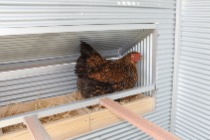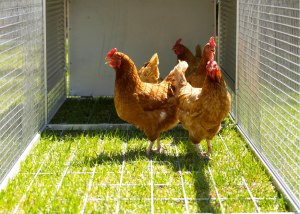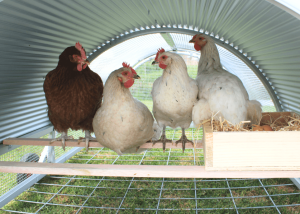5 Tips for Adding New Chickens to your Backyard Flock
If you’re thinking of adding a few new spring chickens to your backyard flock to boost the egg count, here are 5 tips to make the transition process as easy as possible for you, your older hens and the new additions.

Most people are familiar with the concept of a ‘pecking order’ in chicken society. Many people however, do not realise the implications of adding new chickens to an existing flock, which has previously established each member’s place within the chicken hierarchy.
You might not realise it, but chickens know whom they are allowed to pick on (those beneath them in the hierarchy) and which other chickens they must be submissive to. Adding new chickens throws the hierarchy into confusion, with a new order needing to be established. During this phase, fighting will occur amongst the chickens in order to determine who is submissive and who is dominant, and in the end, which bird will be the ‘top chook’.
1. Use two coops side by side
If you happen to have two chicken coops (or chicken tractors) or are able to borrow a small coop for a week or two, you have the option of putting your new chickens in this second coop, which can then stand alongside your main coop. This gives both groups of chickens the opportunity to get familiar with each other, without any physical contact. After a week or so, you can then integrate the new chickens into the main coop. While it’s likely that there’ll be some fighting, it will be less intense due to the precautionary, ‘familiarization’ stage that you’ve undertaken.
2. Introduce new chickens at night-time
It has also been found that introducing new chickens to a flock at night-time can help to minimize the fighting that occurs. Grab a torch and place the newest additions amongst the older chickens on the perches. At night-time the chickens are less likely to start a fight to establish the pecking order. In the morning, the chickens seem to be less aware of the new additions.
3. Distract birds with special treats
If night-time isn’t a practical time for you to integrate your chickens, you can at least take measures to distract the older chickens while you introduce the new birds. Feed the chickens some fruit or veggie scraps, fresh weeds or grain to keep them busy and less aware of what is happening.
4. Add chickens of a similar size/ age

Also keep in mind that there will be less fighting if you introduce new chickens that are of a similar age or at least a similar size to your older hens. If your new chickens are considerably younger and therefore smaller, they will almost certainly be picked on by older chickens and less able to defend themselves. The closer the chickens are in size/ age the less fighting that will take place.
5. Don’t add a second rooster
Remember that one rooster will rule the roost. If you’re thinking of adding a second rooster to your flock, you might like to think again. Roosters are quite possessive of the chickens in their coop and will fight with the new rooster, even to death, to eliminate the threat of this new male in their environment.
Practically it really isn’t necessary to have several roosters, as one can adequately ‘service’ quite a number of chickens for fertilization purposes. I’m sure many owners of backyard chickens would also agree, that one very early morning wake up call is quite adequate – two roosters belting out a tune at 6am would be too much for you and your neighbours to take, no matter how much you love your backyard chickens!


































